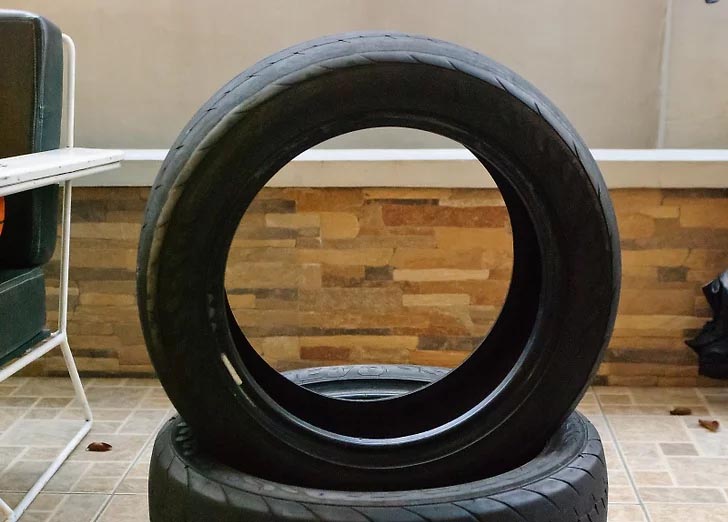You are here:
Disposing of Tires from Your Home or Private Property Information for households and property owners about disposing of unwanted or abandoned tires. https://www.tceq.texas.gov/permitting/waste_permits/tires/tires-disposal-qa https://www.tceq.texas.gov/@@site-logo/TCEQ-1072x1072.png
Information for households and property owners about disposing of unwanted or abandoned tires.
On this page:
You may be able to dispose of your own used or scrap tires during a bulky trash collection event sponsored by your local government. A landfill may accept your tires directly, but will usually charge a fee.
Use the municipal solid waste facility map viewer to find landfill locations and phone numbers. Contact the landfill to confirm that it accepts tires for processing or disposal. If you have many tires, you may need to hire a scrap tire transporter to pick them up and haul them to an authorized scrap tire storage, processing, or disposal facility.
To report abandoned tires, you can contact local city or county authorities, contact the TCEQ field office for your region, or file a complaint online with the TCEQ.
If there are just a few tires, you may be able to dispose of them during a bulky trash collection event sponsored by your local government, or take them to your local landfill.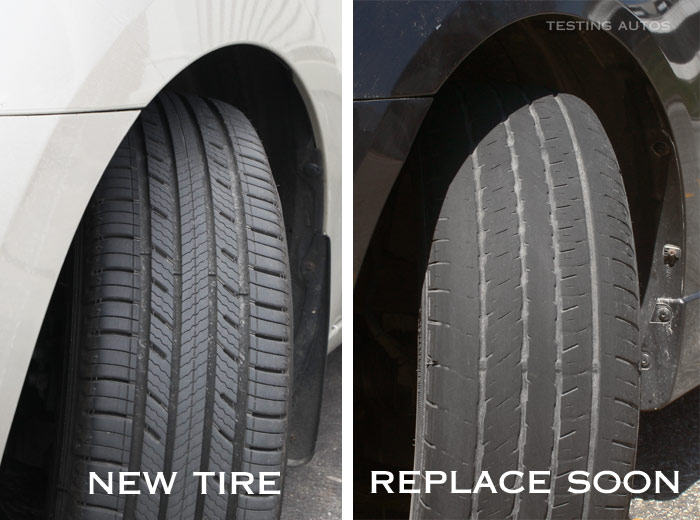 Use the municipal solid waste facility map viewer to find landfill locations and phone numbers. Contact the landfill to confirm that it accepts tires for processing or disposal. If you have many tires, you may need to hire a scrap tire transporter to pick them up and haul them to an authorized scrap tire storage, processing, or disposal facility.
Use the municipal solid waste facility map viewer to find landfill locations and phone numbers. Contact the landfill to confirm that it accepts tires for processing or disposal. If you have many tires, you may need to hire a scrap tire transporter to pick them up and haul them to an authorized scrap tire storage, processing, or disposal facility.
Follow this link to download a list of Active Used and Scrap Tire Handlers and Facilities in Texas.
Visit our Reporting Abandoned Tires page.
Requirements (statutes and rules) for the management of used or scrap tires can be found online in Texas Health and Safety Code 361.112 361.1125 30 TAC 328, Subchapter F
Please contact the Scrap Tire Program if you have other questions about disposing of tires.
Missouri citizens generate about six million scrap tires a year, or about one per person per year. Just what is a scrap tire? A scrap tire is a tire that can that can no longer be used as it was originally designed to be used, it has sat out in the elements for over a year, has been cut up in some fashion or someone has placed it somewhere just to be rid of it.
Just what is a scrap tire? A scrap tire is a tire that can that can no longer be used as it was originally designed to be used, it has sat out in the elements for over a year, has been cut up in some fashion or someone has placed it somewhere just to be rid of it.
An environment free of scrap tires is important to the public health of all Missouri citizens. Why? Scrap tires can become homes for mosquitoes, snakes and other vermin. Mosquitoes breed in the stagnant water that collects inside tires. Because diseases transmitted by mosquitoes can be a serious health threat, removing and properly managing scrap tires is a priority in Missouri.
Do NOT burn them! It is illegal to burn tires in Missouri, except at facilities approved by the department. Uncontrolled tire burning can pollute our air, water and groundwater.
Some options for properly disposing of scrap tires are:
 Either cut the sidewalls out of each tire, creating two sidewalls and the tread ring, or cut each tire through the center of the tread ring (like a bagel) and dispose of the pieces with the household trash. Tires cut in either of these two ways are the only way a permitted sanitary landfill may accept tires for disposal.
Either cut the sidewalls out of each tire, creating two sidewalls and the tread ring, or cut each tire through the center of the tread ring (like a bagel) and dispose of the pieces with the household trash. Tires cut in either of these two ways are the only way a permitted sanitary landfill may accept tires for disposal.
By 1990, illegal scrap tire piles had become so large and widespread in Missouri that the State Legislature passed Senate Bill 530. This legislation acknowledged scrap tires as a significant waste stream in the state and established a scrap tire fee to fund the Missouri Department of Natural Resources' scrap tire oversight and management activities, scrap tire cleanups by non-profit groups, educational programs/ curriculum about solid waste management and scrap tire surface material grants. The 50-cent scrap tire fee is applied to the retail sale of every new tire.
Scrap tire shredding at the Bishop Tire Site, 2006.From 2006 until 2018, the department conducted a scrap tire cleanup program called the Scrap Tire Roundup. The department partnered with the Missouri Department of Corrections to cleanup tire dump sites containing between 500 to 10,000 tires.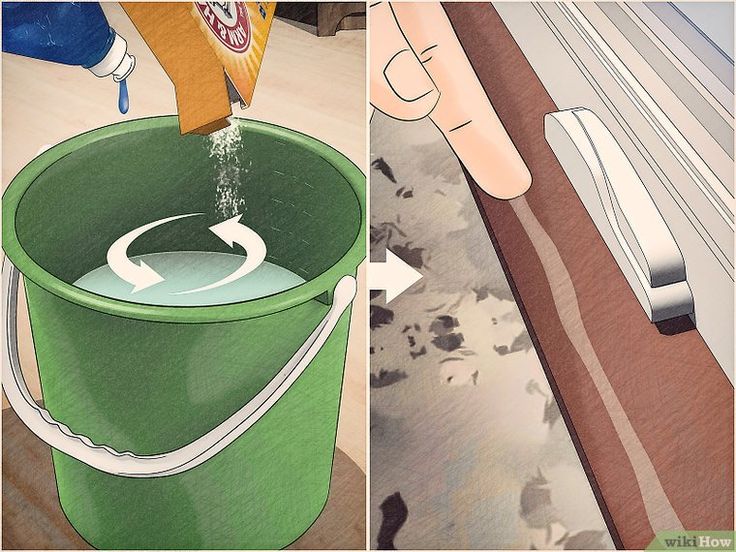 Due to the economic feasibility of conducting these cleanups, the department shifted its focus from conducting tire cleanups to encouraging and supporting the development of alternative, beneficial uses for scrap tires. The department uses the funds generated by the scrap tire fees to create economic incentives for properly managing scrap tires in Missouri. The department also educates individuals and businesses and strives to maintain a level playing field for all industry members through permitting scrap tire processors, inspecting scrap tire businesses and taking enforcement actions as needed. For general information about managing scrap tires, visit Management of Scrap Tires - PUB2056.
Due to the economic feasibility of conducting these cleanups, the department shifted its focus from conducting tire cleanups to encouraging and supporting the development of alternative, beneficial uses for scrap tires. The department uses the funds generated by the scrap tire fees to create economic incentives for properly managing scrap tires in Missouri. The department also educates individuals and businesses and strives to maintain a level playing field for all industry members through permitting scrap tire processors, inspecting scrap tire businesses and taking enforcement actions as needed. For general information about managing scrap tires, visit Management of Scrap Tires - PUB2056.
Since authorization and funding began in 1990 -
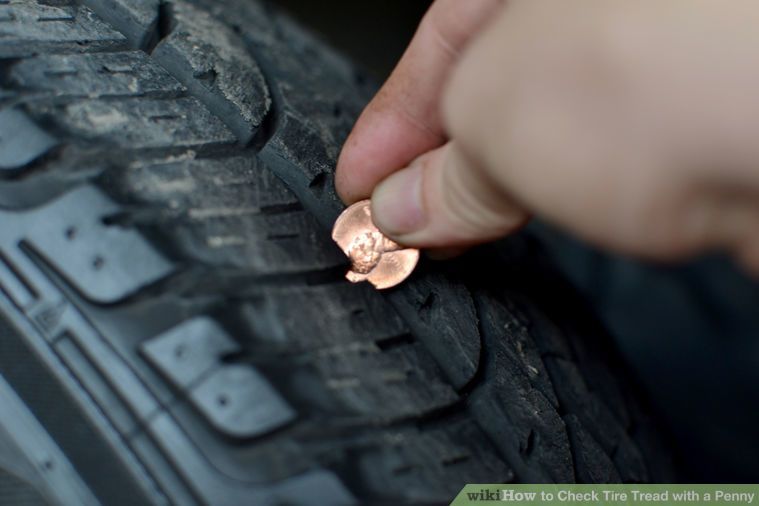
For more information about scrap tires, visit Scrap Tire Guidance Documents and Fact Sheets.
According to the law, 80% of all old tires must be collected and recycled in Lithuania every year. According to the Environmental Protection Agency, 95% of officially delivered tires to the market are properly disposed of. The results are encouraging, but Virginia Zhigene, an expert at the Institute for Conservation of Nature, noted that a large part of the tires that enter the market are not taken into account for one reason or another, so there is no reason to be happy.
The results are encouraging, but Virginia Zhigene, an expert at the Institute for Conservation of Nature, noted that a large part of the tires that enter the market are not taken into account for one reason or another, so there is no reason to be happy.
"According to estimates, tire manufacturers and importers who do not have obligations or who do not fulfill them import more than 10,000 tons of tires into Lithuania. We should also not forget that many car service centers operate illegally, so they do not care about proper waste disposal, tires are among them," Zhigene said.
Such tires usually end up in remote places - in forests, fields, near water bodies. Old tires are also left near the containers with household waste, in addition, residents store them in their basements and sheds.
The fact that tires are not properly disposed of and do not end up in the hands of recyclers shows how much old rubber is collected from forests. Municipalities deal with the disposal of this waste, but this requires additional costs, and taxes fall on the shoulders of taxpayers. However, Zhigene noticed that the level of consciousness of the inhabitants is gradually growing, and this is facilitated by information about waste disposal and the possibilities of recycling tires in particular.
However, Zhigene noticed that the level of consciousness of the inhabitants is gradually growing, and this is facilitated by information about waste disposal and the possibilities of recycling tires in particular.
"A wave of sustainability is coming to Lithuania, a new generation is growing, a new view of the environment is being formed. Finally, the regulatory authorities are inspecting car services more thoroughly. There are still a lot of shortcomings that need to be worked on, but the business itself is changing its attitude - it is more actively involved in the circular economy , does not stand aside," the expert noted.
Where you can donate old tires for free
Tire rubber can take over 120 years to decompose, and it's not just an aesthetic problem. Decaying tires release toxic chemicals that poison the land and its biodiversity. Finally, with groundwater, chemicals enter wells, and from there to people. There are times when residents burn rubber. But this is a petroleum product, so when burned, it releases toxic substances into the air.
But this is a petroleum product, so when burned, it releases toxic substances into the air.
Specialists from the Department of Nature Conservation remind that residents can return old tires absolutely free of charge, so there is no need to scatter them anywhere.
Residents usually change their tires at car services, where they can leave their old tires free of charge. In addition, according to current laws, dealers, importers and manufacturers must inform buyers about the rules for recycling tires, since the recycling fee is already included in their price. This means that the buyer can bring as many tires to the buyer as he bought from him.
In addition, residents can return their old tires free of charge at the bulky waste collection sites. There are almost 100 of them in Lithuania. At such sites, one resident can return 4 old tires per year.
Žigene recommends checking the website atliekos.lt for a list of responsible companies that properly dispose of old tires: "In this system, you can find all car services declaring waste. With a high degree of probability, we can say that the company on the list is responsible, therefore collects all waste, including rubber."
With a high degree of probability, we can say that the company on the list is responsible, therefore collects all waste, including rubber."
If we dispose of tires incorrectly, we not only pollute the environment, but also throw away recyclable materials that could be recycled. Recyclers separate tires into textiles, metal and rubber. Textiles are used to generate energy, while metal and rubber are reused in manufacturing.
“Rubber is made into granules, which are used to produce rubber mats, sports and playground surfaces, etc. The granules are also used to repair roads – such examples can also be found in the world,” Zigene said.
The project was initiated by the Ministry of the Environment and financed by the European Regional Development Fund.
On the one hand, it is not difficult to return old tires. They can simply be thrown into a landfill if the problems of environmental pollution, as well as the growth of serious diseases, do not bother.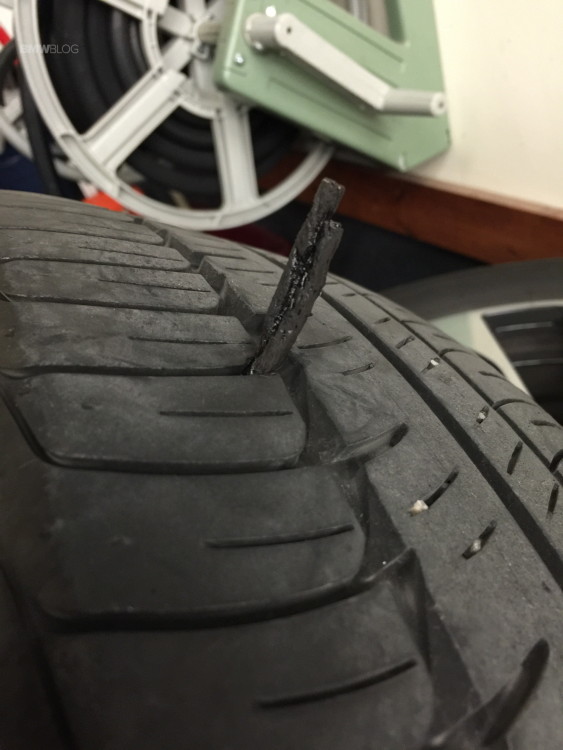 But problems can also be viewed from other perspectives. Tire tires, even used ones, are raw materials. Quite a few useful items can be made from it, especially if there is a private house or summer cottage. Finally, instead of throwing it away, you can take your old tires to a collection point for money.
But problems can also be viewed from other perspectives. Tire tires, even used ones, are raw materials. Quite a few useful items can be made from it, especially if there is a private house or summer cottage. Finally, instead of throwing it away, you can take your old tires to a collection point for money.
Contents of the article
Used tires are accepted by recycling industries for grinding. From the obtained raw materials, products are made, intended for for construction and economy. In addition, new tires are made from them.
The disposal of used tires can be carried out for money, free or with an admission fee. Interested in the first option, with two other problems do not occur. It is not worth counting on large sums, price range - from 50 to 150 rubles. per tire, depending on its diameter (from 15 up to 22.5, respectively).
Prices vary by type of tires, as well as their quantity. For example, for 1 ton of non-studded rubber they pay 4 tr. If it is studded, the cost rises to 6 tr. Cameras are bought for 30 rubles. Accordingly, for a set of worn studded tires, along with cameras, you can get 720 rubles. The amount is small, especially if you need services for transporting tires to the place of reception.
For example, for 1 ton of non-studded rubber they pay 4 tr. If it is studded, the cost rises to 6 tr. Cameras are bought for 30 rubles. Accordingly, for a set of worn studded tires, along with cameras, you can get 720 rubles. The amount is small, especially if you need services for transporting tires to the place of reception.
The most profitable change of tires to get:
Preliminary it is necessary to specify in autoshops and technical services the availability of such promotions. Given that they have offers in accepting used tires come in constantly, they can suspend promotions for indefinite period. Then there is another option, where to hand over the old tires for money.
As noted earlier, tires are a good building material. His can be used for the following purposes:
His can be used for the following purposes:
Finally, vegetables are grown with their help in agriculture. It is enough to bury the tire in the ground, place seedlings in it. Thus, moisture is retained longer, yields increase. In addition, drinkers for domestic animals are made from tires.
All used as follows:
The second option will require ingenuity, organizational skills, as well as the ability to negotiate. But if during the search it was not possible to find enterprises where you can hand over tires for recycling for money, but on the contrary, they still require payment for services, then there is a reason to think about your own business.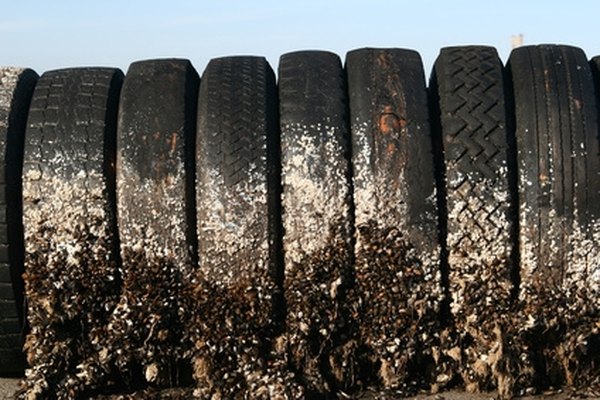
For users of the Vyvoz.org website, we have compiled (and constantly updated) a list of organizations in large (and not only) Russian cities where you can return old tires for money or free of charge:
Moscow
Saint Petersburg
Astrakhan
Barnaul
Vladivostok
Volgograd
Voronezh
Yekaterinburg
Izhevsk
Irkutsk
Kazan
Kaliningrad
Kemerovo30002 Such an enterprise will require small investments - from 50 to 80 tr. Most of the money will be spent on renting premises, registering an organization, paying one or two employees, as well as advertising. A prerequisite is that the owner independently (at least for the first time) creates devices for agriculture and decor for yards. A license to collect and store recyclables is required.
Then a commercial offer is created, pages are drawn up in the most popular social networks. Targeting advertising in them is not expensive, it allows you to quickly reach the target audience. Additionally, announcements are posted in rural areas, at dacha cooperatives, commercial offers are sent to management companies.
Additionally, announcements are posted in rural areas, at dacha cooperatives, commercial offers are sent to management companies.
The production process consists of the following steps:
If the demand for rubber increases, you can offer to the population to hand over rubber for processing for money. In parallel is an agreement with a processing plant, where you can deliver in bulk unclaimed rubber. Such a business can bring from 50-70 to 300-500 tr. monthly. Depends on organizational owner's abilities.
By law, legal entities are required to report on the delivery of used tires for recycling.